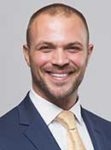When first-year law students are learning what constitutes self-defense in a criminal case, their professors typically turn to a classic law casebook’s analysis of People v. Goetz. In 1984, Bernhard Goetz, a white New Yorker, gunned down four Black teens on the subway after they asked him for money. The casebook will describe how Goetz had previously been mugged, how two of the boys had screwdrivers in their coats, and how Goetz’s largely successful claim of self-defense hinged on the “reasonableness” of his fear that the boys were a threat.
What the book typically will not address is the glaring issue of race in the case, including the racially charged language—“savages”, “vultures”, “predators”, “gang of four” —that Goetz’s lawyers used to paint the boys as menacing threats. Or how they were allowed to re-create the crime in court using fully grown, muscular men (vigilantes calling themselves the Guardian Angels) to represent the young teens — teens whom a friend would later describe in a Moth story as bored, lifelong friends on the hunt for extra pocket change.
Reading the Goetz casebook summary of the acquittal of the “subway shooter” leaves many criminal law students disturbed, but with little ability to channel their sense that the law got it wrong. Last year’s Santa Clara 1L criminal law students were no exception: “I felt empty when I finished reading it,” said 2L Christina Iriart. “A lot of people in our generation are more aware of racial disparities,” she explains. “The book didn’t do a good job of explaining the details of the case, what led up to it, who are the people…To me it’s plainly obvious that the law is biased, but the book didn’t go into that at all.”
It turns out their professors shared their sense that the book missed the mark. In fact, many things about the casebook, and about casebooks in general, frustrated them. Criminal law casebooks make choices about which cases to use to teach various concepts, and Santa Clara Law Professors David Ball and Michelle Oberman had talked for years about their sense that many of the choices are questionable ones. For example, the mandatory (and expensive) casebook they assigned often used gratuitously prurient examples to illustrate small, unrelated points of law. It used a brutal rape case — Commonwealth v. Cook — to explain accomplice liability. Over the years, students who were sexual assault survivors had confided their inability to focus on the law whenever the subject of rape arose.
To many students, it felt like the authors were treating the impacts of criminal justice as a purely intellectual, even entertaining, exercise — lacking in empathy or an acknowledgment that “these are still human beings. These are their lives, these are emotions…this is the rest of their lives that can be impacted,” as Iriart put it.
So instead of just teaching around the cases by filling in the gaps — as professors Ball and Oberman had been doing for years — a group of three Santa Clara Law professors and 11 law students decided to take the matter into their own hands, and create their own casebook. They aimed to replace gratuitously lurid or needlessly racially laden cases with equally pertinent, better-contextualized cases, or to add notes and analysis that directly addressed issues like race.
Their casebook still uses many of the classical criminal law cases, but thoughtfully. In the notes for the Goetz case, for example, the student authors added a series of questions, such as whether a reasonable person would have felt endangered if the races were reversed, or if the boys’ possession of screwdrivers mattered to the case if they never showed them to Goetz. They also added study findings that 56 percent of whites believe Black people to be “violence-prone” and asked whether instead of treating racist fears as a “reasonable” excuse, society should hold such knee-jerk discrimination as a violation of “social morality.” Those who fail to overcome it “for the sake of another’s health, safety, (or) personal dignity” might then be the ones deemed “blameworthy”, the note posits.
Another case, State v. Williams, raised complex issues of historical discrimination against Native Americans but was simply seeking to explain criminal negligence, the group found. Students found another case, Walker v. Superior Court, involving Christian Scientist healing through prayer, which “gets at a lot of the same criminal negligence issues with a lot less baggage,” said 2L Zachary Nemirovsky.
Phillip Yin, also a 2L, said he remembered a classmate who’d had a difficult time discussing Cook;in class, because she’d personally experienced sexual violence. It confirmed for him that “you don’t need a fact pattern about rape to teach conspiracy — which is two people agreeing to commit a crime.” After his team found and replaced Cook with Commonwealth v. Costa, a case involving bar hoppers charged with conspiracy, the classmate was relieved. “She said, ‘this makes me feel much better that other people won’t have to deal with the same thing I had to deal with”, he recalled.
The results of this summer’s herculean project is a new, unique — and free — open-source case book called the Ball/Oberman Criminal Law Casebook, named after Santa Clara Law Professors David Ball and Michelle Oberman who oversaw the project and, along with their student co-authors, selected and edited cases and drafted supplemental notes. The team was joined by Santa Clara Law Associate Dean for Academic Affairs and Professor Michael Flynn, who will be teaching criminal law for the first time this fall.
The project got its start in April, after COVID-19 caused many students to lose their summer internships. Oberman, a leader of the initiative, said to her colleagues: “Let’s just take whatever research assistant money we have and hire the students who are interested in criminal law. We know they’re terrific, and they’ll help us fix the book.” The students worked in teams to tackle a dozen discrete legal concepts such as the law of self-defense, sexual assault, homicide, or conspiracy. Other professors ended up chipping in some of their leftover research assistant funds to help as well, Flynn noted.
While others (notably Harvard) have created open-source casebooks, and still others (notably George Washington University law professor Cynthia Lee and UC Davis law professor Angela Harris) have sought to broaden racial context in criminal law casebooks, the Ball/Oberman book is unique for making law students equal co-authors, and for the potential it offers for ongoing contributions from future classes of students, as well as from colleagues around the country.
“This is what our belief is about what the law should be, and how law is made,” said Ball. “It should be representative; it should be an ongoing dialogue. It’s not just that you get two stone tablets on the top of a mountain, then come down and here we go. We teach our students to talk back to the law, because that’s what good lawyers do.”
“The law is a series of choices: about who gets to participate, about who and what gets included,” he said, adding, “and about how we leave room for growth, change, and adaptation over time as we discover problems with the law, or as we realize that the law no longer fits the people it serves and the situations they face.”
Flynn noted that writing their own casebook enables the authors to focus in a more targeted way on serving Santa Clara Law students—providing the building blocks of legal analysis; equipping them for their internships as future lawyers, and — something that most case law books don’t address — preparing them for the California Bar exam.
“We are able to be more flexible and meet our students where they are and what they need,” said Flynn.
The student authors — all 2Ls — are Cydney Chilimidos; Miriam Contreras; Jenai Howard; Christina Iriart; Angela Madrigal; Leah Mesfin; Zachary Nemirovsky; Nicholas Newman; Nathanial Perez; Michael Pons; and Phillip Yin.
The professors say the project, and the students, wildly exceeded their expectations.
“The strength of our Law School is in its student body, and their willingness to work as part of a community,” says Oberman. “From the beginning, this project underscored the fabulous things our students bring to the school—the incredible diversity, their willingness to work hard, and their ability to work in teams.”


